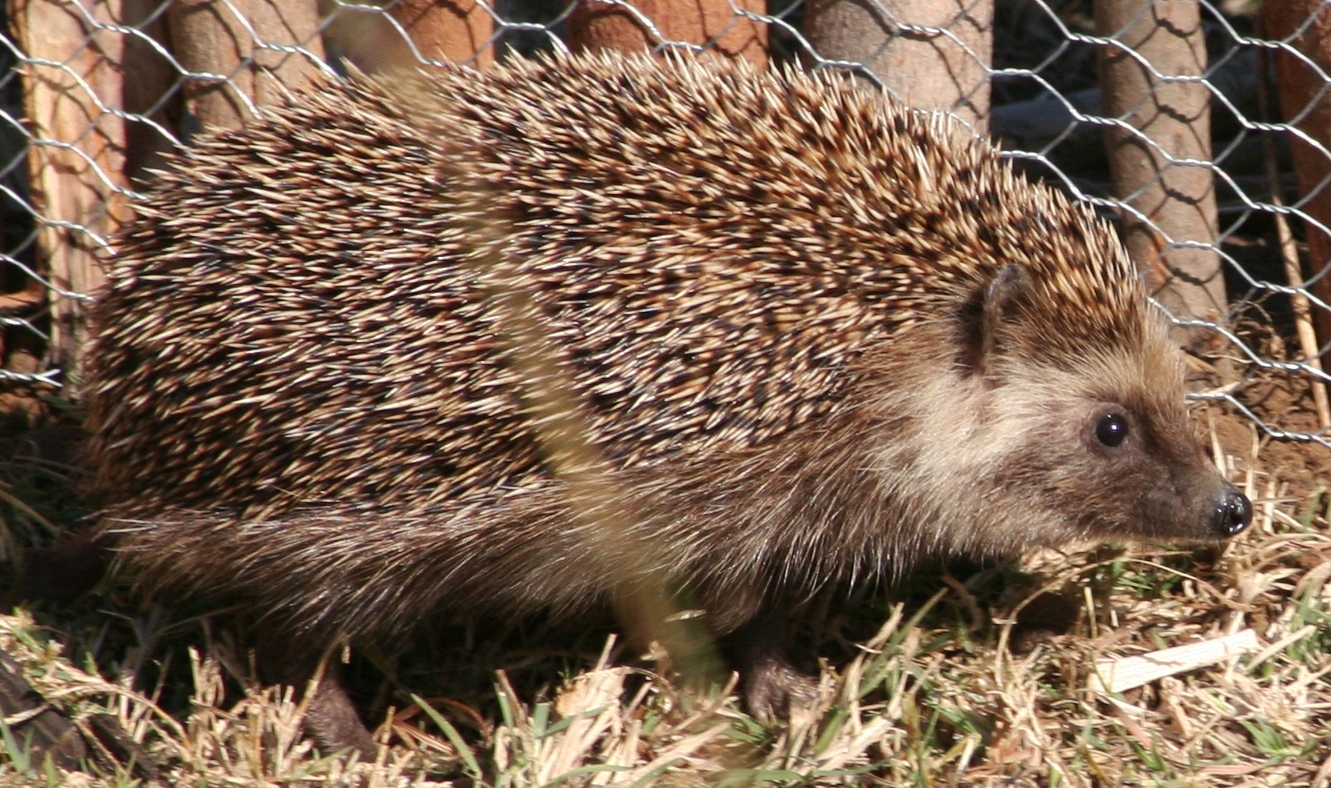
South African hedgehog
South African hedgehogs are protective species in South Africa and they also naturally occur in Lesotho, eSwatini, Namibiè, Mozambique, Zimbabwe and Botswana. They´re often mistaken for African pygmy hedgehogs due to similarities in their appearance.

Taxonomy
| Kingdom: | Animalia |
| Phylum: | Chordata |
| Class: | Mammalia |
| Order: | Eulipotyphla |
| Family: | Erinaceidae |
| Genus: | Atelerix |
| Species: | A. frontalis |
Natural habitat
The South African hedgehog has its habitat, as the name suggests, in the southern part of Africa. The species mainly lives on farmland, grassland and along the edges of forest areas. The species is also kept locally as pets, but to date has not been exported to other continents as such. The species is also hunted locally for its meat or to use the spines for medicinal purposes. The animals do not hibernate, but do hibernate during the colder days of the year. They then sleep more and eat less, but remain active in between.
Geography
The South African hedgehogs live in two completely separate habitats and are therefore quite special. The smallest habitat is in Central and Northern Namibia to South-West Angola. The largest habitat extends from South Africa, through eastern Botswana to northern Zimbabwe. This area also runs through small parts of Lesotho.
Climate
In the largest habitat of the South African hedgehog, the highest measured temperature is about 32 degrees Celsius and the lowest about 5 degrees Celsius. In the dry season, less than 0.5 mm of rain falls per day on an average of 2 days per month. In the rainy season there is about 5 mm of rain per day on about 12 days per month. Throughout the year, the South African hedgehogs in this area have 8 to 10 hours of sunlight per day.
In the smallest habitat, the highest temperature is around 33 degrees Celsius and the lowest temperature around 8 degrees Celsius. In the dry season, there is on average only one day of rain per month, which is less than 0.3 mm. In the rainy season there is about 3mm of rain per day on an average of 8 days per month. There is between 4 and 7 hours of sunlight per day in this habitat.
Flora & fauna
Most of the South African hedgehog’s overall habitat consists of grassland, savanna, dry plateaus and small areas of woodland. There are, among others, Blue wildebeest, antelope and African wild dogs. Towards South Africa there are also giraffes, elephants, cheetahs and Kudus.
Most plants in these areas consist of grasses and shrubs. Some trees that occur there are mahogany species, figs, Baobab trees and Teak trees.
Appearance
At first glance, the South African Hedgehog looks a lot like the African pygmy hedgehog. In lighter animals of this species, the mask in combination with an almost white belly can strongly resemble am African pygmy hedgehog. The easiest way to tell the difference is to look at the number of toes on the hind legs. South African hedgehogs have five toes on their hind legs and five toes on their front legs. Seen from above, this hedgehog species has a teardrop shape and when viewed from the front, they have a heart-shaped head. The ears are placed directly behind the eyes, with a visible bald stripe called the ‘Reversed mohawk’ between them. The dorsal muscles are also well visible, which lie on either side of the reversed mohawk. The mask of a South African hedgehog are very typical; they have a white band around the head that extends across the forehead. They have visible dark stripes on the forehead. The belly color can vary from very light cream to very dark brown. They become about 250-500 grams in weight and about 15-25 centimeters in length.
Protective status
South African hedgehogs are not protected in their habitat and are therefore often kept as pets in gardens or even indoors. They are considered a pest by many local people, as the species is often found on farmland where they destroy cultivated plants and affect crops. On the other hand, the animals are also seen as a blessing by many farmers, because they prevent insect and rodent infestations. There are also population groups that see the animals as medicine and kill the hedgehogs for it. Opinions in the social field differ greatly within the local population.
There are several rescue centers in South Africa and Namibia that take care of South African hedgehogs. Not much is known about the species in other areas.
Hybrids in South African hedgehogs
Due to the strong resemblance, the question quickly arises whether the species also has hybrid forms. This is certainly the case with the South African Hedgehog and the African pygmy hedgehog; both through natural propagation and through human action.
Because the habitat of the South African hedgehog extends to the north of Zimbabwe, there is a small overlap with the habitat of the African pygmy hedgehog, which occurs as far south as Zambia. Within this area, the two species live together and hybrids have developed. However, the differences between the species are minimal, making it difficult to identify hybrids. But they are there for sure!
On the other hand, the species has also emerged as a hybrid through the actions of humans. The local population is often only minimally aware of the difference between South African Hedgehogs and African pygmy hedgehog and both are possible to keep as pets and that is what happens. Due to lack of knowledge about the species, they are also crossed with each other to create hybrids. Often the hybrids of this nature are easier to recognize: the animals often have the expressive white spots of an African pygmy hedgehog that were created by Pinto; a form of the Piebald gene. The hybrids are often a bit coarser in physique and more territorial than normal African pygmy hedgehogs. Often the pigmentation of these hybrids is also very extreme, with some animals being colored almost entirely in black and white.
